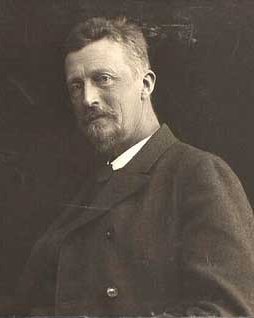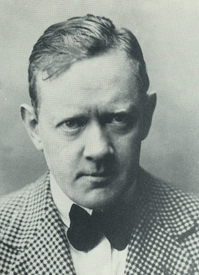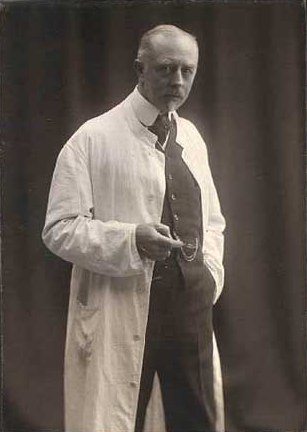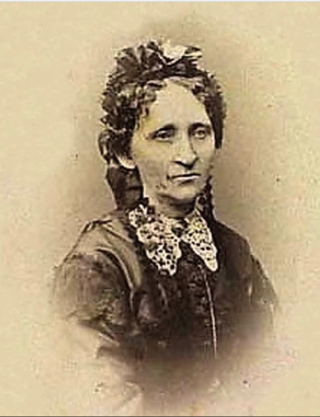
The Royal Danish Academy of Fine Arts has provided education in the arts for more than 250 years, playing its part in the development of the art of Denmark.

Jane Reumert was a Danish ceramist.

Michael Gottlieb Birckner Bindesbøll was a Danish architect active during the Danish Golden Age in the first half of the 19th century. Most known for his design of Thorvaldsens Museum in Copenhagen, he was a key figure in the stylistic shift in Danish architecture from late classicism to Historicism. He was the father of the designer Thorvald Bindesbøll and the textile artist Johanne Bindesbøll.
Rigmor Mydtskov was a Danish court photographer who is remembered for her portraits of artists performing in Danish theatres but especially for her many portraits of Queen Margrethe and other members of the Danish royal family.

Gustav Friedrich (von) Hetsch was a Danish architect.
Kasper Salto is a Danish industrial designer, most known for his furniture designs. He is the grand son of painter, ceramist and writer Axel Salto.

August Andreas Jerndorff was a Danish painter who is best known for his portraits.

Kai Nielsen was a Danish sculptor.
Gertrud Vasegaard, née Hjorth, was a Danish ceramist, remembered above all for her tea set (1956) which was included in the Danish Culture Canon. A designer for Bing & Grøndahl and Royal Copenhagen, she also had her own workshop where she collaborated with her daughter Myre.

Søndre and Nordre Fasanvej are two streets which form a long south--to-north oriented artery through Frederiksberg, an independent municipality surrounded by larger Copenhagen Municipality in Copenhagen, Denmark. The southern part of the street is surrounded by large green spaces and attractive residential neighbourhoods while its northern part, which enters the Nørrebro and North-West districts of Copenhagen, is dominated by former industry. The street takes its name after Fasangården, a former royal pheasantry, in Frederiksberg Park.

Joakim Frederik Skovgaard was a Danish painter. He is remembered above all for the frescos which decorate Viborg Cathedral.

Svend Hammershøi was a Danish painter and ceramist. He is remembered principally for the classical pottery designs he contributed to the Royal Copenhagen and to Kähler's Ceramics Factory in Næstved.

Suzette Catherine Holten was a Danish painter and ceramist who belonged to the Skovgaard family of artists. In addition to landscapes, flower paintings and portraits, she created and decorated ceramics and also worked as an embroiderer. As a woman, she was unable to achieve the same level of acclaim as her father or brothers.

Arnold Krog was a Danish architect, painter and designer who is remembered for his achievements as artistic director of Royal Copenhagen from 1884 to 1916. He revived the company after a period of decline, moving away from the stiff Empire style of previous decades in favour of a more Impressionist style which combined underglaze painting techniques with inspiration from Japanese imagery and European naturalism. He designed the Polar Bear Fountain for the Peace Palace in The Hague. He has also designed furniture and silverware and took up landscape painting after his retirement from the porcelain factory in 1916.
Frederikssundsvej is a major artery in the North-West, Brønshøj and Husum districts of Copenhagen, Denmark. It begins at Nørrebro Station as the direct continuation of Nørrebrogade and changes its name to Herlev Hovedgade and then Skovlunde Byvej, Ballerup Byvej and Måløv Byvej before reaching the town of Frederikssund.

A. Michelsen was a leading Danish jeweller founded in 1841 by Anton Michelsen in Copenhagen. It was responsible for executing all Danish orders. It was absorbed by Georg Jensen A/S in 1985.

Christine Louise Ipsen was a Danish businessperson. She was a major industrialist as the owner and manager of the famous P. Ipsens Enke, and as such uncommon as a woman for her time. She also achieved Royal warrant of appointment (1871).
Bernhard Seidelin (1820-1863) was a Danish architect. His most notable works include Helsingør station and Nyboder Girls' School.

Erik Magnussen was a Danish silversmith and designer. He was from 1925 to 1939 based in the United States, initially as artistic director of the Gorham Manufacturing Company in New York City and later with his own workshop in first Chicago and then Los Angeles.

Skindergade 23 is a 19th-century property located on the southeast side of Skindergade, between Klosterstræde and Kejsergade, in the Old Town section of Copenhagen, Denmark.

![[The factory in Utterslev] P. Ipsens Enke (Utterslev).png](http://upload.wikimedia.org/wikipedia/commons/thumb/d/d1/P._Ipsens_Enke_%28Utterslev%29.png/220px-P._Ipsens_Enke_%28Utterslev%29.png)
![[Louise Ipsen] Louise Ipsen (1822 - 1905).png](http://upload.wikimedia.org/wikipedia/commons/thumb/5/54/Louise_Ipsen_%281822_-_1905%29.png/160px-Louise_Ipsen_%281822_-_1905%29.png)
![[Advertisement for the company] Katalog von P. Ipsens Enke Kgl. Hof-Terracotta-Fabrik Copenhagen.png](http://upload.wikimedia.org/wikipedia/commons/thumb/f/f9/Katalog_von_P._Ipsens_Enke_Kgl._Hof-Terracotta-Fabrik_Copenhagen.png/160px-Katalog_von_P._Ipsens_Enke_Kgl._Hof-Terracotta-Fabrik_Copenhagen.png)
![[P. Ipsens Enke products in a catalogue from 1886] P. Ipsens Enke - catalogue, 1886.png](http://upload.wikimedia.org/wikipedia/commons/thumb/e/e0/P._Ipsens_Enke_-_catalogue%2C_1886.png/160px-P._Ipsens_Enke_-_catalogue%2C_1886.png)














